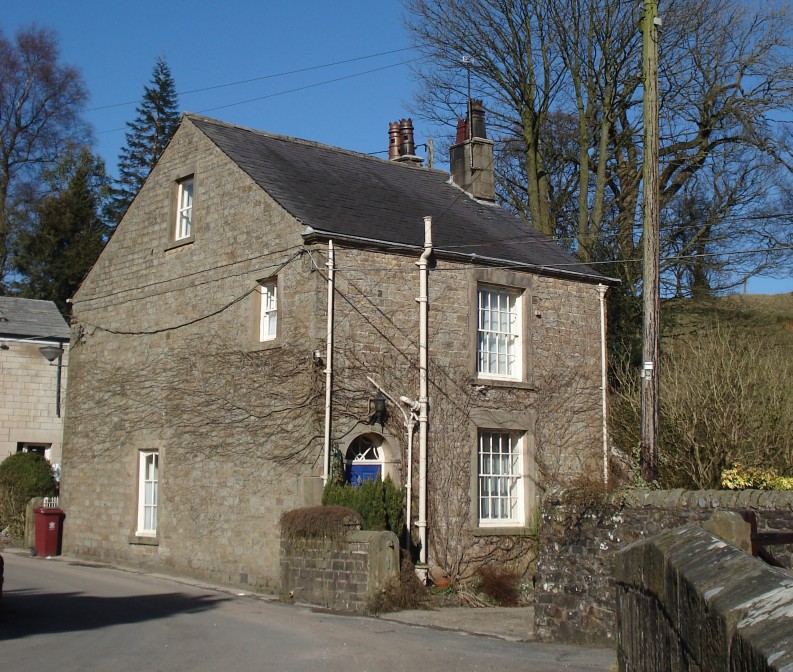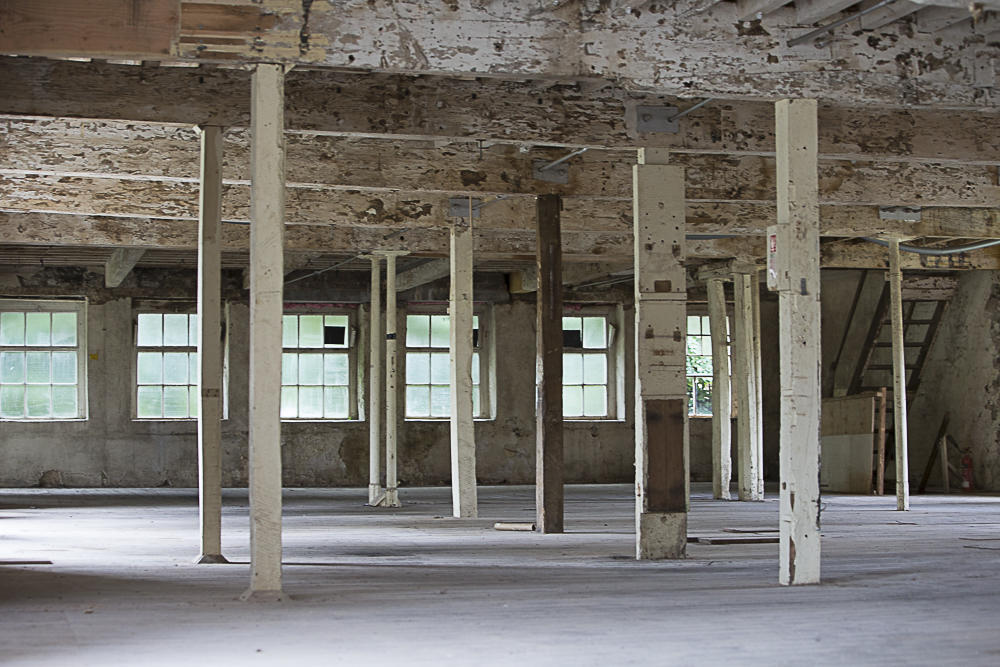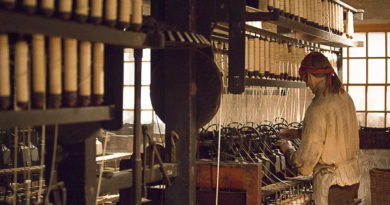The second cotton-spinning mill
The second cotton-spinning company, established after the first went bankrupt in 1787. It was owned by Peter Atherton and his son in law Ellis Houlgrave cotton manufacturer, with William Harrison and John Rose, spinner. They did a lot to develop the site.
Peter Atherton, an engineer and inventor, was one of Arkwright’s first partners and later became one of the most successful cotton spinners in Britain. He had interests in Warrington, Manchester, Flint and Liverpool.
The cotton-spinning company under Atherton, Houlgrave, Harrison and Rose was a big and established enough concern to merit the Sun Insurance they took out on 29th August, 1795, according to Chris Aspin (The Water Spinners). These insurance papers detail significant advances in both the machinery the company owned and the improvements in the fabric of Kirk Mill. Here is some detail of the work that was carried out under the second company:

Kirk House was built in the style of splendid merchant’s houses in Liverpool. The date on drain pipe head is 1793. It became the mill owner’s house. The smaller scale Grove House, probably already erected, became the manager’s house.
A detached building was erected over the road from the mill. Fire insurance records state that this included a warehouse and stables with a reeling room over. There was an arch over the road giving access to the mill. This building was converted to cottages after cotton spinning ceased at Kirk Mill.
Improved water supply. With the co-operation, again, of Thomas Weld, owner of the neighbouring Stonyhurst [Leagram] estate, an important change in the water supply was negotiated. On 24 June 1792, Ellis Houlgrave entered into an agreement with Thomas Weld to build a replacement water corn mill for Leagram Mill. The new mill was built on Leagram land on Chipping Brook downstream of Kirk Mill at the edge of Chipping village (this mill always known as Chipping Mill). Water from the upper part of the brook which had supplied Leagram Mill could be diverted from a weir through field ditches to Dobson’s Brook.
The main mill building was enlarged at the west end to take extra machinery including mules. Sale advert () The mill contained 1120 spindles and a mule of 336 spindle, with an adjoining building [the enlargement] designed to receive 3 additional mules.


The waterwheel was originally 19ft diameter – as per the Arkwright package. This was a 10 horsepower wheel, which ran 1000 spindles. But under the second cotton-spinning company, the wheel was probably enlarged to cope with the need for extra power. No documentary record of the wheel at this time is known, however when the third company sold the mill in 1808 the advert stated that the mill was capable of working from 2000 to 3000 spindles.
This suggests a bigger wheel was in place by then. It is not until 1843 that there is a written record of the wheel size. The diameter was given then as 32ft.
Additional buildings:- An apprentice house for 150 boys and a weft mill for spinning cotton waste were planned. Site thought to be up the valley at the top end of Kirk Mill land, near Saunder Rake where the company had a few cottages. By Oct 1799 after Atherton’s death, the apprentice house had been built when the mill was first advertised for sale. However its site remains a mystery. It is possible that it was abandoned as an apprentice house and incorporated in the developments at Saunder Rake by William Bond who set up a cotton spinning mill there 1803-7. Most likely the apprentice house was turned into more cottages. The1841 census shows 18 houses at Saunder Rake with 100 residents, many working either at Kirk Mill or Saunder Raike mills. Also despite some searching, only a few apprentice children have been located in the records late 1790s.
The business came to a sudden end with the deaths of Ellis Houlgrave and Peter Atherton and was sold in 1801.
